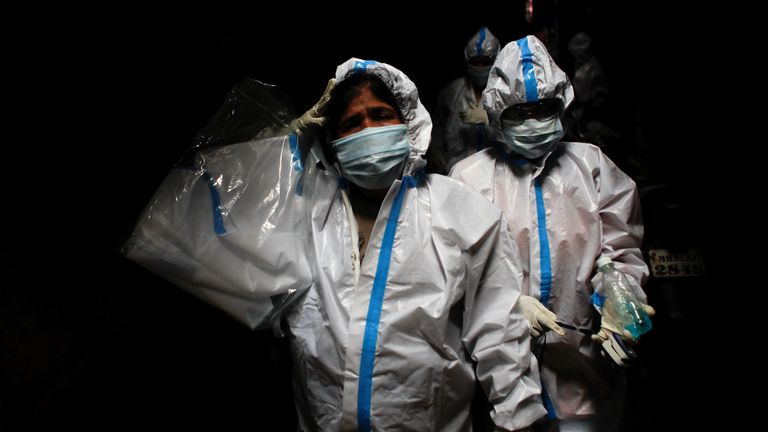India has reported a record daily jump in coronavirus cases, taking the total number of infections in the country above two million.
On Friday, officials confirmed that 62,538 new cases had been identified.
India is the third worst-affected country in the world behind the US and Brazil.
According to India’s health ministry, only a third of the 2.03 million cases are currently active, with the country recording its highest-ever number of recoveries on Thursday.
The first registered COVID-19 case was detected in Kerala on 30 January this year. It took 173 days to reach a million cases on 16 July.
Since then, it has taken just 21 days to reach two million – an indication of how quick the virus has spread across the country.
India now has the fastest growth rate of contagion at 3.1%.
More than 41,500 deaths have been reported so far. However, the government is keen to suggest that India’s fatality rate of 2% is lower than what has been seen in other countries.
Nevertheless, the trajectory of the virus continues to show an upward trend across all states.
The worry for the government is that cases are showing up in significant numbers in small towns, cities and villages in rural India – where most live.
The public healthcare system is inadequate to say the least and in some places non-existent.
Last week, Sky News reported from the main district hospitals in Bihar, one of the poorest states in the country.
The hospital, which caters to thousands of people, was devoid of medical basics – let alone the specialised equipment needed to fight the pandemic.
This is not an isolated case, but a replica of what is seen in many government hospitals across the country.
Almost 70% of citizens use private hospitals, clinics and doctors. The cost of healthcare has been on the rise and an illness can push a family into poverty.
For decades, successive governments have spent just over 1% of the GDP on public healthcare. More resources now will not mitigate the immediate problem. In the face of a severe pandemic, this ignored and struggling infrastructure could collapse – affecting the poorest in this country.
The pandemic has had a damaging effect on the economy, and in particular the daily wage earners and contract workers who form almost 80% of the workforce.
Millions were left with no earnings for months as the country was put in a severe lockdown – with little or no savings left basic health care is unaffordable for most.
According to data from the WHO, the Indian government spends $63 (£48) per person on health care for its 1.3 billion people in 2016, in comparison China spent $398 (£303) for each of its 1.4 billion people.
Though India has managed to halve its poverty rate over the past 15 years, more than 176 million people still live on less than $2 (£1.52) a day.
The pandemic is shining a spotlight on the country’s vast inequalities and in particular healthcare.



